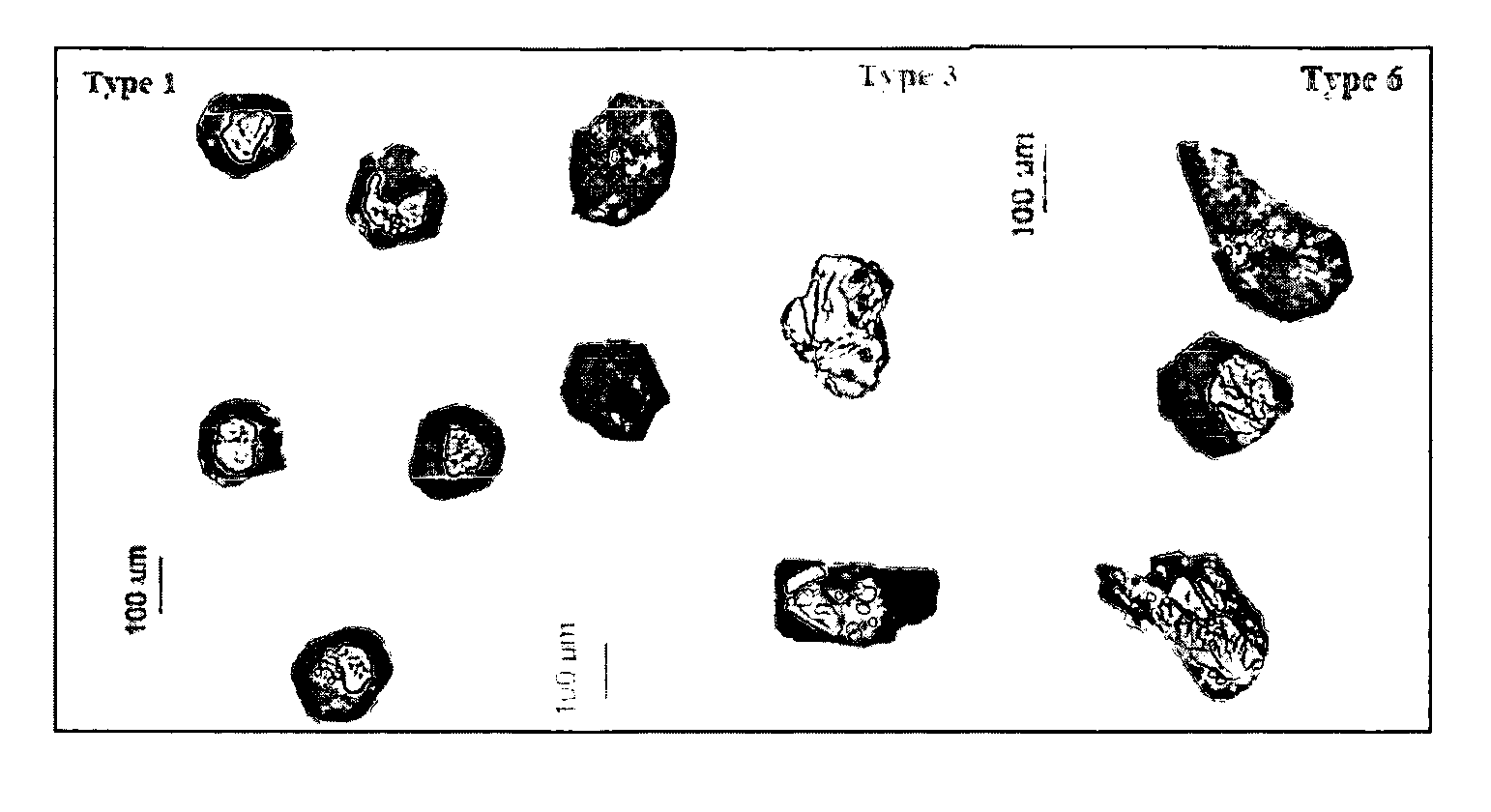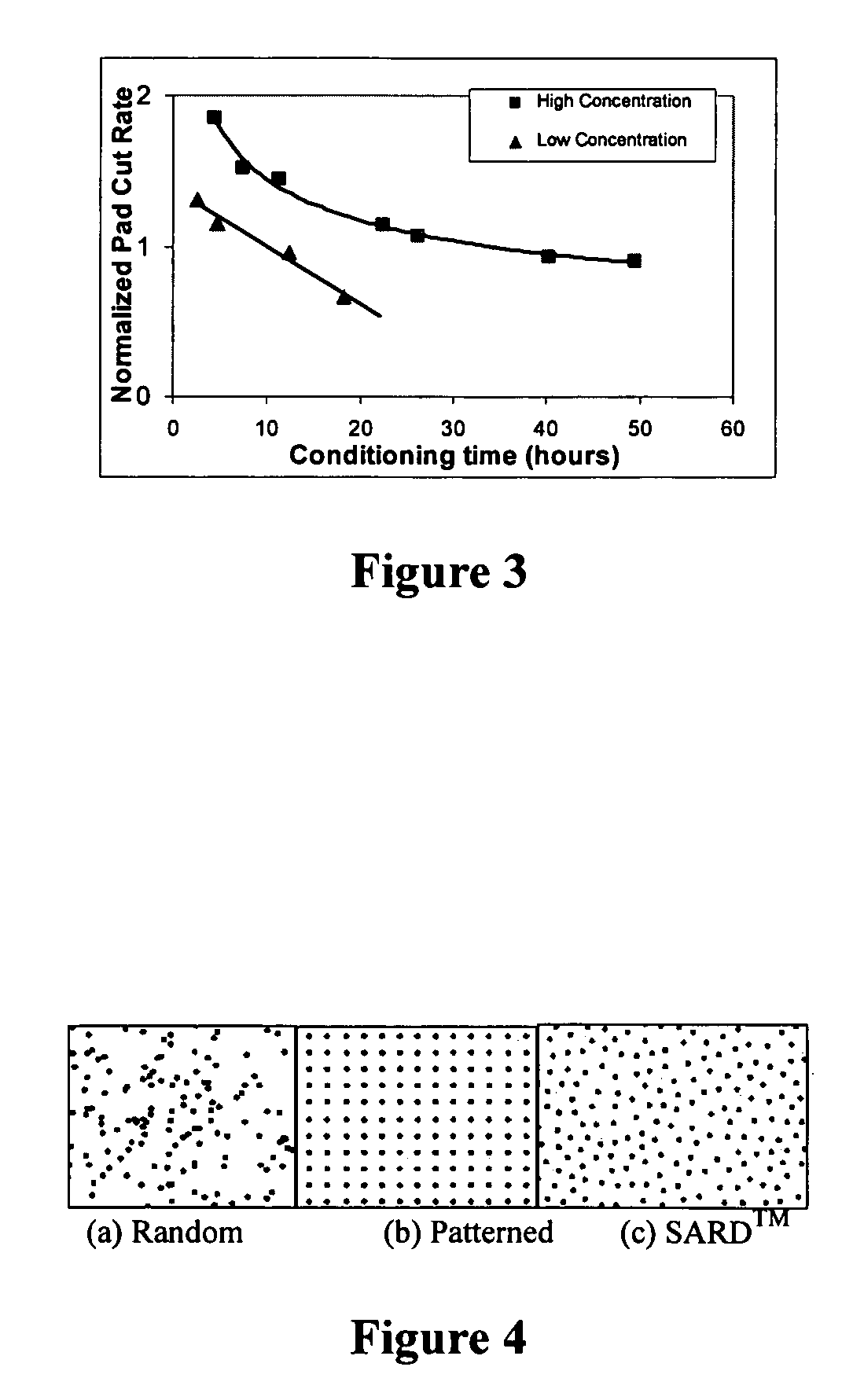Optimized CMP conditioner design for next generation oxide/metal CMP
a technology of oxide/metal and conditioner, applied in the field of abrasives technology, can solve the problem of not being able to simply maintain process stability, and achieve the effect of reducing the dishing on wafers processed
- Summary
- Abstract
- Description
- Claims
- Application Information
AI Technical Summary
Benefits of technology
Problems solved by technology
Method used
Image
Examples
Embodiment Construction
[0018]A CMP conditioner design and related techniques are disclosed. As will be appreciated in light of this disclosure, generation of optimal CMP pad texture can be achieved with an optimization of various pad conditioner design parameters. Such optimal pad texture in turn leads to reduced wafer defects.
Optimization of Conditioner Design Parameters
[0019]In accordance with embodiments of the present invention, several conditioner design parameters can be optimized to improve wafer defect rates through generation of desirable pad textures. In one particular embodiment, these design parameters include abrasive size, abrasive distribution, abrasive shape, and abrasive concentration. Each of these conditioner design parameters and it relevance to optimal pad texture will be discussed in turn.
[0020]Abrasive Type: Diamond is a typical abrasive used in CMP conditioner applications. Appropriate selection of diamond type is considered, as it can directly influence resulting pad surface textu...
PUM
| Property | Measurement | Unit |
|---|---|---|
| particle size | aaaaa | aaaaa |
| Ra | aaaaa | aaaaa |
| particle size | aaaaa | aaaaa |
Abstract
Description
Claims
Application Information
 Login to View More
Login to View More - R&D
- Intellectual Property
- Life Sciences
- Materials
- Tech Scout
- Unparalleled Data Quality
- Higher Quality Content
- 60% Fewer Hallucinations
Browse by: Latest US Patents, China's latest patents, Technical Efficacy Thesaurus, Application Domain, Technology Topic, Popular Technical Reports.
© 2025 PatSnap. All rights reserved.Legal|Privacy policy|Modern Slavery Act Transparency Statement|Sitemap|About US| Contact US: help@patsnap.com



